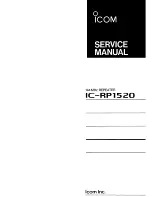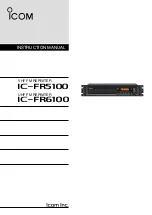
5
A
CAUTION:
Elevated water temperature can be
hazardous. The U.S. Consumer Product Safety
Commission has these guidelines:
1. Spa water temperatures should never exceed
104°F (4
0°C). A temperature of 100°F (38°C) is
considered safe for a healthy adult. Special caution
is suggested for young children.
2. Drinking of alcoholic beverages before or during spa
or hot tub use can cause drowsiness which could
lead to unconsciousness and subsequently result in
drowning.
3. Pregnant Women Beware! Soaking in water over
102°F (39°C) can cause fetal damage during the first
three months of pregnancy resulting in the birth of a
brain-damaged or deformed child. Pregnant women
should stick to the 100°F (38°C) maximum rule.
4. Before entering the spa or hot tub, users should
check the water temperature with an accurate
thermometer; spa or hot tub thermostats may err
in regulating water temperatures by as much as 4°F
(2.2°C).
5. Persons with a medical history of heart disease,
circulatory problems, diabetes, or blood pressure
problems should obtain a physician’s advice before
using pools or hot tubs.
6. Persons taking medications which induce
drowsiness, such as tranquilizers, antihistamines,
or anticoagulants, should not use spas or hot tubs
.
Recommended Level(s)
Fiberglass Pools
Fiberglass Spas
Other Pool and Spa Types
Water Temperature
68-88°F (20-31°C)
89-104°F (31-40°C)
68-104°F (20-40°C)
pH
7.3-7.4
7.3-7.4
7.6-7.8
Total Alkalinity (ppm)
120-150
120-150
80-120
Calcium Hardness (ppm)
200-300
150-200
200-400
Salt (ppm)
4500 Maximum
4500 Maximum
4500 Maximum
Free Chlorine (ppm)*
2-3
2-3
2-3
Total Dissolved Solids (ppm)
3000 Maximum**
3000 Maximum**
3000 Maximum**
*Free Chlorine
MUST NOT EXCEED 5 ppm!
**In saltwater chlorinated pools, the total TDS can be as high as 6000 ppm.
Table A. Pool Water Chemistry
2. WATER CHEMISTRY
Chemical imbalance can cause severe damage to your
heater and associated equipment. Maintain your water
chemistry according to
Table A
. If the mineral content
and dissolved solids in the water become too high, scale
NOTE:
It is recommended that the pump be run at least
5 minutes after the heater has been turned off. This helps
in taking away residual heat from the heat exchanger,
thus prevents the safety hi-limits from tripping due to
residual heat after the heater is turned off.
A
WARNING:
Risk of fire. It is recommended that CO
monitor and fire alarm be utilized in rooms that contain
gas fired appliances
forms inside the heat exchanger tubes, reducing heater
efficiency and damaging the heater. If the pH drops below
7.2, this will cause corrosion of the heat exchanger and
severely damage the heater.
Heat exchanger damage
resulting from chemical imbalance is not covered by
the warranty.
For your health and the protection of your pool equipment,
it is essential that your water be chemically balanced. The
following levels must be used as a guide for balanced
water.
NOTE:
Damage due to poor water chemistry is not a
warrantable defect.
A
CAUTION:
Free chlorine must not exceed 5 ppm
which can damage the heater and is not covered under
warranty.
• Occasional chemical shock dosing of the pool or spa
water should not damage the heater providing the
water is balanced.
• Automatic chemical dosing devices and salt
chlorinators are usually more efficient in heated
water, unless controlled, they can lead to excessive
chlorine level which can damage your heater.
• Check valve should be installed between the heater
outlet and a chlorinator or other chemical dosing
device.
• Further advice should be obtained from your pool
or spa builder, accredited pool shop, or chemical
supplier for the correct levels for your water.
Automatic Chlorinators
and Chemical Feeders
All chemicals must be introduced and completely diluted
into the pool or spa water before being circulated through
the heater. Do not place sanitizing chemicals in the
skimmer. High chemical concentrations will result when
the pump is not running (e.g. overnight).
Chlorinators must feed downstream of the heater and
have an anti-siphoning device to prevent chemical backup
into the heater when the pump is shut off.
See "Plumbing Diagram" on page 18.
Содержание 207A
Страница 21: ...21 6 WIRING DIAGRAM...
Страница 46: ...46 NOTES...
Страница 47: ...47 NOTES...
Страница 48: ......






































